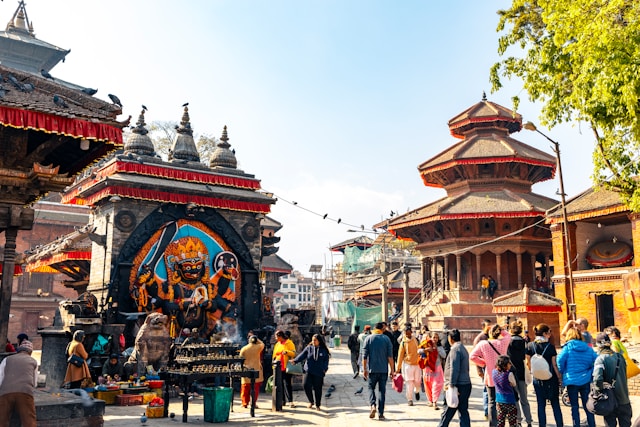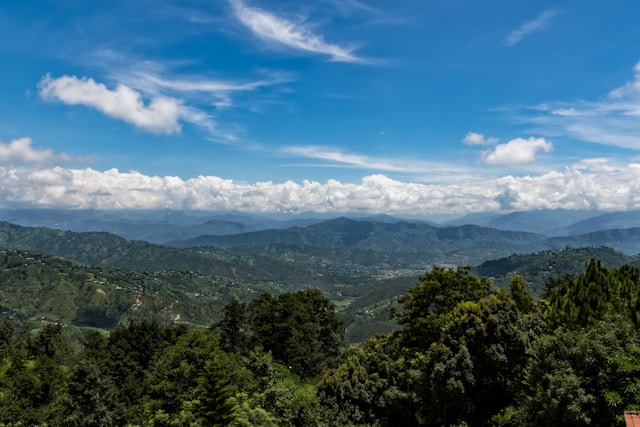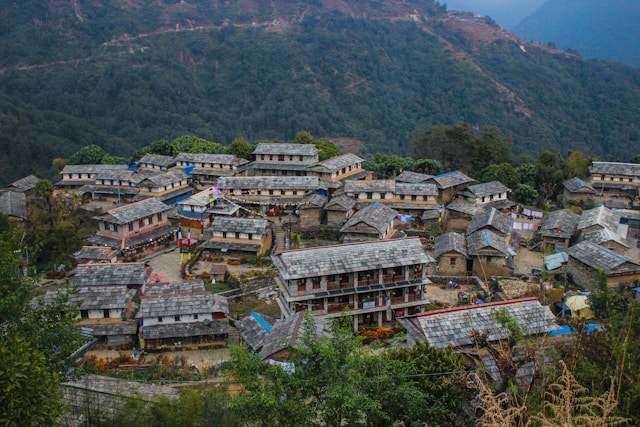The Kathmandu Valley, the cultural and political heart of Nepal, is home to two of the most historically and socially significant cities—Kathmandu and Lalitpur. While these urban centers are geographically close, separated only by the Bagmati River, their lifestyles, architecture, rhythms of daily life, and cultural expressions offer fascinating contrasts that shape the identity of the valley itself. In this in-depth comparison, we explore the distinct flavors of life in each city, revealing how both contribute uniquely to the pulse of Nepal.
Kathmandu: A Melting Pot of Cultures and Commerce
The Urban Core of Nepal’s Capital
Kathmandu, Nepal’s capital, is the nation’s largest and most dynamic metropolis. It serves as the political, economic, and administrative hub, teeming with government offices, corporate headquarters, embassies, and a diverse population.
Life in Kathmandu is fast-paced and multifaceted. The city buzzes with activity from dawn to dusk, with congested roads filled with honking microbuses, motorcycles weaving between cars, and a constant flow of people. Thamel, Kathmandu’s tourism epicenter, reflects the city’s cosmopolitan character. Here, you’ll find an eclectic mix of restaurants, souvenir shops, trekking gear outlets, and cultural performances that attract tourists year-round.
Modernity Interwoven with Ancient Heritage
Despite its modern veneer, Kathmandu is steeped in ancient heritage. Sites like Swayambhunath (Monkey Temple), Kathmandu Durbar Square, and Pashupatinath Temple ground the city in spiritual and architectural significance. Unlike Lalitpur, however, these historical areas often contrast starkly with encroaching urbanization, resulting in a blend that is both chaotic and charming.
Career Opportunities and Urban Appeal
Kathmandu draws thousands of internal migrants and professionals seeking better job prospects, higher education, and international connectivity. The city’s infrastructure, while strained, offers a concentration of schools, hospitals, international NGOs, IT firms, and government bodies. This makes it the first choice for career-minded individuals and entrepreneurs.
Cultural Diversity and Festivals
As a true melting pot, Kathmandu hosts a diverse population from all corners of Nepal, resulting in a rich tapestry of cultures, religions, and dialects. Festivals like Indra Jatra, Tihar, and Dashain are celebrated with grandeur, often involving public parades and mass gatherings. These events bring Kathmandu’s multifaceted identity to life in dazzling color.
Lalitpur: A City of Artisans and Tranquility

The Soul of Nepalese Craftsmanship
Located just south of Kathmandu, Lalitpur—also known as Patan—is revered as a center of traditional craftsmanship, Newar culture, and Buddhist philosophy. It is smaller and more serene than its bustling neighbor, exuding an atmosphere of artistic refinement and historical preservation.
Patan is world-renowned for its metalwork, woodcarving, and stone sculpture. Many artisans here belong to families who have practiced their craft for generations, contributing to temples, statues, and intricate design work across Nepal and beyond.
Lalitpur Durbar Square: A Living Museum
The centerpiece of Lalitpur is its UNESCO World Heritage Site, Patan Durbar Square, which stands as a testament to the city’s medieval architectural splendor. Unlike the more commercialized Kathmandu Durbar Square, Patan’s square remains well-preserved and spiritually active, often hosting local rituals and festivals such as Rato Machindranath Jatra.
Here, life unfolds slowly. Mornings begin with devotees visiting neighborhood shrines, locals feeding pigeons in the square, and shopkeepers opening their doors to a steady rhythm of daily routine—a stark contrast to Kathmandu’s chaotic energy.
Education, Innovation, and Community Living
Lalitpur is also home to prestigious institutions such as KIST Medical College, Pulchowk Engineering Campus, and Patan Hospital, which serve as both education and healthcare anchors in the region.
Despite being steeped in tradition, Lalitpur has embraced sustainable urban development, with a growing number of co-working spaces, local NGOs, and eco-conscious cafes such as Yala Mandala and Patan Museum Café supporting a modern yet mindful lifestyle. The city also boasts a tighter-knit community feel, with narrow alleys, residential courtyards (bahals), and intergenerational homes forming the urban fabric.
Infrastructure and Living Standards: A Comparative View
Transportation and Accessibility
Kathmandu, with its extensive yet overburdened road network, provides more frequent public transportation options, taxi services, and connectivity to the international airport. However, traffic congestion and pollution remain major concerns.
Lalitpur, on the other hand, offers better walkability and quieter neighborhoods. While transportation options may be more limited, its layout encourages cycling and pedestrian commuting, especially within the heritage zones.
Cost of Living
Both cities are relatively affordable compared to global standards, but Kathmandu tends to be more expensive in terms of rent and services. Lalitpur offers slightly lower housing costs and better value in terms of living quality versus cost, especially for families and retirees seeking a quieter pace of life.
Environmental and Urban Planning
In recent years, Lalitpur has taken notable strides in urban planning and green initiatives. From community-managed waste systems to heritage conservation projects, the city has shown a commitment to sustainable living. Kathmandu, burdened by its scale and growth, struggles with unmanaged construction and inadequate sanitation systems.
Culture and Identity: City of Power vs. City of Art
Kathmandu: The Political Powerhouse
Kathmandu’s identity is tied to political influence, commerce, and diversity. It is a city constantly in flux, absorbing new trends, populations, and ideologies. It thrives on its role as the national decision-making center and gateway to global interactions.
Lalitpur: The Cultural Heartbeat
Lalitpur, by contrast, offers a more introspective and spiritual lifestyle. Its identity is deeply embedded in Newar traditions, Buddhist rituals, and artisanal legacy. It is less about expansion and more about preservation, making it an ideal setting for those seeking a balanced, creative life.
Choosing Between Kathmandu and Lalitpur
Who Should Choose Kathmandu?
- Career-oriented professionals in need of broader job markets
- Entrepreneurs looking for business exposure
- Individuals who thrive in fast-paced, diverse environments
- People seeking access to international travel and government services
Who Should Choose Lalitpur?
- Artists, designers, and cultural enthusiasts
- Families seeking a quieter, community-centric environment
- Students and scholars of Buddhist philosophy and Newar culture
- Anyone looking for a slower, sustainable urban lifestyle
Final Thoughts: Two Cities, One Valley, Infinite Possibilities
Kathmandu and Lalitpur, though bound by geography, offer two distinctly different urban experiences. One thrives in modern chaos and multicultural dynamism, while the other preserves tradition and crafts a thoughtful existence. Together, they define the duality of the Kathmandu Valley—where modern ambition meets timeless tradition.
Whether you’re a traveler, a resident, or someone planning to relocate, understanding the contrasting lifestyles of these cities offers a deeper appreciation of Nepal’s vibrant urban identity.


